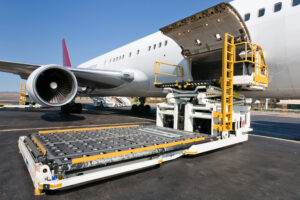Apr 02, 2024

Since the pandemic began, there has been on industry-wide rollercoaster rides in both transportation and logistics (T&L) and mergers and acquisitions (M&A). In just this decade so far, we’ve seen some of the highest highs and lowest lows that these industries has ever faced. My grandfather, the founder of our family trucking company, always said, “You can’t know where you’re going until you know where you’ve been.”
2020 – 2022: Record Highs
Prior to the COVID pandemic, T&L was an afterthought. It was a facet of most operations businesses didn’t want to manage and were happy to outsource to the lowest bidder. The pandemic threw a spotlight on the T&L industry, highlighting the importance of the global supply chain. This brought it to the top of every executive’s mind and triggered a wave of new investors in the space. Shippers demanded stability from their logistics service providers (LSPs), especially in air freight, where the commodities and end-markets are generally more time-sensitive and higher touch than ocean freight. The extensive backlog and soaring ocean freight rates drove many shippers to direct cargo normally sent by ocean to air, creating a dramatic increase in air freight volumes and, in turn, profits. As a result, strategic buyers looked to expand their service offerings to retain existing customers and win new business in an environment where many shippers were frustrated with their LSP and were looking for a better solution. Those additional service offerings became a central cross-selling tool, adding a stronger value proposition and a greater scope of services.
During the pandemic, industry performance was stellar. The chaos in the supply chain led to astronomical freight rates, driving record-setting profitability in the industry. Meanwhile, investor appetite hit a new high. Strategics experienced unprecedented cash flow and needed an outlet to spend it, M&A. Financial Sponsors that were not previously interested in T&L suddenly were. At the same time, the market was saturated with potential sellers. Business owners recognized that valuations are driven by profitability, so many shareholders looked to capitalize on the opportunity.
READ: Global airlines 2024 outlook: Cruising through a challenging environment
2023: Record Lows
As inventory backlogs piled up, shippers reduced volumes and moved those volumes back to ocean freight, causing the reckoning in freight rates at the end of 2022 and the beginning of 2023. As a result, 2023 became a year of normalization. Soft freight volumes and compressed margins meant profitability plummeted for operators industry wide. Still, buyer appetite remained strong. Strategic buyers were still sitting on piles of cash they had accumulated during the pandemic-driven spike in earnings. However, high-interest rates kept Financial Sponsors on the sidelines as cash-rich buyers reigned supreme. The activity that did persist centered on add-ons rather than platform acquisitions.
Freight forwarders went from record profits to record declines, creating a challenging dealmaking environment. Recognizing that the environment was unfavorable, many shareholders waited for the market to stabilize, which resulted in a severe lack of sellers. The deals that did go to market often stalled as buyer and seller valuation expectations differed, creating a sometimes insurmountable dealmaking gap. Buyers were focused on sustainability and a proven, corresponding EBITDA. At the same time, sellers struggled to swallow the fact that their profitability (and resulting valuation) was 25%+ lower than it would have been just a year prior.
Despite the hurdle of buyer/seller valuation expectations in M&A, deals still got done in 2023. The flight to quality was evident. High-quality assets well-positioned to recover and capitalize when market conditions eventually improved were desirable. Valuation multiples shifted toward Next Twelve Months (NTM) EBITDA-driven valuations as both buyers and sellers came to terms with the fact that COVID performance was not an accurate barometer of future performance. To bridge the gap between valuation expectations while managing the buyer’s risk, successful deals became more heavily structured, and due diligence became more extensive as buyers needed more time to “predict” the future for the target.
READ: Globalisation resilient even as US-China decoupling advances
2024: The New Normal
After a full year of “normalized” freight rates and reduction of inventory surpluses, many operators in the industry feel that we have reached the new normal. Industry profitability is progressively showing signs of improvement. No one is expecting a boom – more of a steady and moderate recovery. Shareholders waiting for the clouds to clear before going to market are now revisiting their strategic initiatives and M&A discussions. Investor appetite remains incredibly high as strategics still have full coffers. As long as interest rates stay high, strategics will retain their competitive advantage as buyers, given their longer investment horizon, lower sensitivity to changes in cost of capital, and ability to realize operational synergies.
With numerous differences between Strategic and Financial Buyers, understanding a buyer’s motivation is critical in any M&A process. In this difficult freight environment, strategics are finding organic growth difficult, and M&A usually proves to be a more efficient avenue for growth. Meanwhile, Financial Sponsors see an opportunity to buy assets with previous interest at reasonable valuations. With that being said, we expect a healthy resurgence in M&A activity in 2024, especially for those high-quality assets with strategic and synergistic value, or specialized services that intrinsically reduce operational, economic, and other exogenous risks.
The post Strategic insights into airfreight’s mergers and acquisitions market appeared first on AIR CARGO WEEK.
Go to Source
Author: Marijan Ljubic




